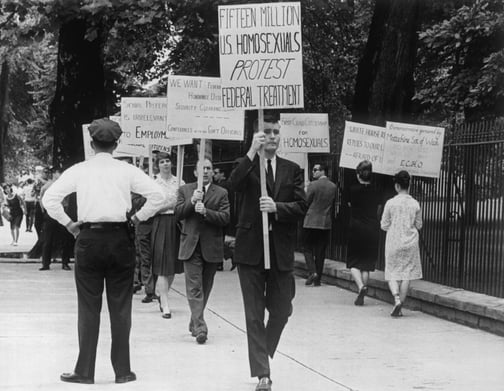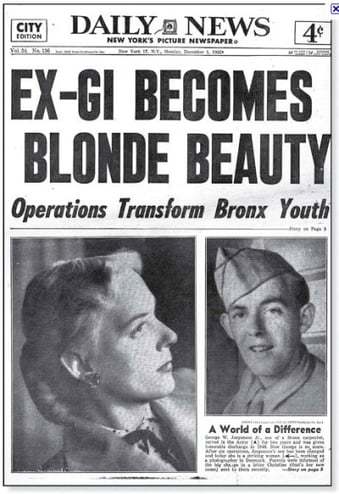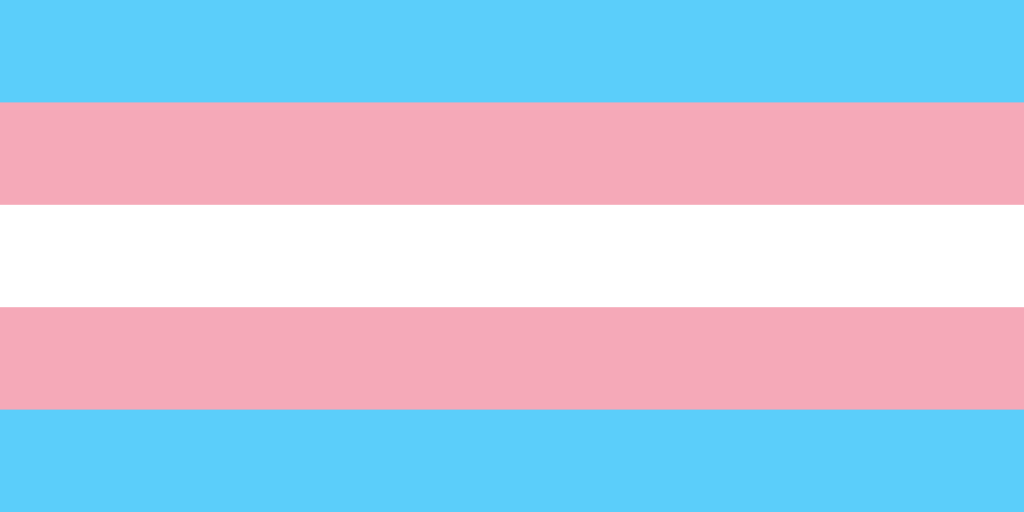The many letters of “LGBTQ+” have a complex, often tense relationship: supposedly all under the same umbrella, but still somehow divided. Knowing one’s place and respecting these divisions can often be just as important as solidarity. These tensions often bubble over into the media, such as the now infamous debates (with varied opinions) over slurs in RuPaul’s Drag Race. A while back for Point’s blog we went into the history of the word “homosexual”- if we go into the history of the word “transgender,” we see how blurry these lines are.
Originally, in Western scientific thought, there was no line between “homosexual” and “transgender.” A popular term in the 19th and 20th century was “invert”- someone with the traits of the “opposite” gender. This was used to explain same-sex love as well as being gender non-conforming. Many of the scientific terms for gender and sexual/romantic identity we now know today, like “homosexual” or “transsexual” came out of this desire to understand humans on almost biological terms. Though this approach started off with “trans” and “cis” queer people together, as this field of “sexology” (which we can now see somewhat in “gender studies”) became more refined, terms like “transvestite” supposedly allowed for more nuance in pinning down human nature and gender.
However, many of the “slang” terms used even today didn’t try to understand anything fundamental about all humans, but were used by people and communities to identify themselves and their personal experiences. Terms and reclaimed slurs like “queen,” “stone butch,” “fairy,” and “drag” were all used by people that many would now call “transgender” or “cisgender.” Even the word “gay,” though now synonymous with “homosexual” to many, was used to describe what some would now call being trans, in a way that didn’t separate orientation and gender identity. However, from the mid-1900s onward, the word “transgender” was popularized as distinct from LGB. To generalize, this has been for two main reasons:
The first root of the LGB/T split was political. Many early activist organizations, though certainly challenging violent bigotry, also sought to conform and reject more “transgressive” elements of gay cultures. Many early demonstrations insisted upon suit and tie for men and dress and heels for women- in the words of one activist “If you're asking for equal employment rights, look employable!" Doubling down on “homosexual” and pushing away groups like drag queens, transsexuals, and “cross-dressers,” (and terms more popular in some communities of color) allowed these groups to become more legible and palatable to mainstream society, an assimilationist strategy many continue to use today.

However, this is a generalization, and though much of the LGB/T split was violent, for many people the split between “transgender” and other terms has been empowering. It goes without saying that not everyone’s experiences of gender and sexuality are alike: many lesbian trans women, for example, don’t have the same experience of being attracted to men (and read-as men) that trans women and gay men have been bonded by, which allowed for these terms to cover both. Having an explicit, concrete term can also inspire others to name their struggles and identity- trailblazing trans woman Christine Jorgensen, for example, gave many a name for what they knew inside their whole lives. Many can also hold on to the creativity and freedom of language while using other words as well- terms like “queen” and many others are still used all the time today.

However, what the many debates and divisions that have come about since the formalization of scientific LGBT+ words demonstrate is that legibility comes at a cost. Many people prefer their own, community-based terms, and the compulsion to come up with precise labels describing the nature of all human sexuality and gender can be a dangerous one that erases how complex and creative our lives truly are. The drive to erase the many shades of gender and identity in the world, either to understand human nature or become legible to the mainstream, is one that has continued from the Mattachine Society to modern day activism, but it is one we can end.
Most importantly, it is key to remember that these terms like “transgender,” though they may claim to be universal, come from Western culture. On this continent, hundreds of Native nations have used their own terms for their nonbinary genders and roles, now often known under the umbrella of “two-spirit.” Touting the Western LGBTQ+ terminology as the only framework without at least questioning its own roots continues 500 years of colonialism and cultural violence here, as well. It’s not only our personal duty to question the words we use, but a political one as well.
If you want to read more on the history of “transgender,” check out David Valentine’s book Imagining Transgender!
 This post was written by Point Alum Camden
This post was written by Point Alum Camden

